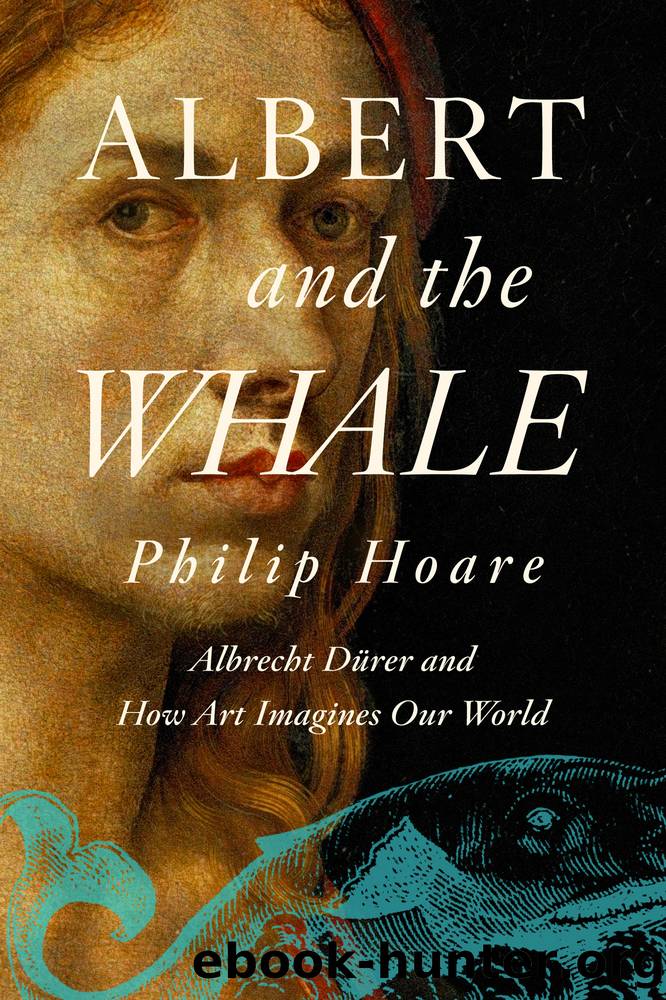Albert and the Whale by Philip Hoare

Author:Philip Hoare [Hoare, Philip]
Language: eng
Format: epub
Published: 2021-05-04T00:00:00+00:00
In turn, Mannâs version of Beebeâs expedition became a dark fantasia, accompanied by a studio orchestra. Thirty-six hundred feet down, under five hundred thousand tons of pressure, in the soundless, frantic foreignness, Adrian sees the unlooked-at, the not-to-be and not-expecting-to-be looked-at, the monstrously extra-human, in den Ozean der Welten alle. (One of his first compositions is Phosphorescence de la mer.) Out of the blackness looms a nightmare vision of obscene jaws and telescope eyes, the paper nautilus, and silver- and gold-fish with goggling eyes on the tops of their heads; others dangle phosphorescent lanterns as lures. All are seized by spasms of twitching excitement: when one of the slimy things touches the capsule, it shatters into a thousand pieces.
Yet as soon as he reaches the greatest profound, unable to go any further, Adrian suddenly spins, in his infected imagination, into interstellar space. He is Faust, being shown the empyreal heavens. As he sees galaxies forming the shape of flattened watches, he realises that the universe beyond is neither finite nor infinite: it is just what it is. High above the world, he sees that medieval theories of its starry fates are echoed in the latest scientific theories, which propose that germs, bacteria, organisms from other planetsâMars, Jupiter, or Venusâcould produce an influenza epidemic on earth. (He might even have noted that the Spanish flu had arrived, not from Europe, but via American soldiers on the converted liner Leviathan.) Disease is a metaphysical state, and the oratorio that Adrian writes as a result of his encounter with MephistophelesâApocalypsis cum figurisâis inspired by the spirit of Dürer, himself infected.
The composer excitedly explains to Zeitblom the transformative effect that Dürerâs engravings have had on his art: strident, raucous music in which the frightful chorus of humanity flees before the four horsemen, stumbling, fallen, overridden; John the Baptist boils in a cauldron of oil while the emperorâs dog looks on; and the towers and gables and pointed oriels of Nuremberg become the Kaisersaschern skyline of Adrianâs birth. This homage to Dürer is a modernist vision of a medieval hell, scored in jazz sequences that deploy drum machines and loudspeakers to cacophonic, infernal effect. A column of drone workers might march out of monstrous jaws. There is only one performance, in 1926: it is less a concert than a great and piercing prophecy of the end, says Zeitblom.
Hell has already happened. Art was taking an increasingly apocalyptical view of the world, as Sebald would write in his natural history of destruction. The demons rapped on the windows of the Pacific Palisades. Some wore aqualungs. Spinning on the cover of his bookâthe Dürer symbolism is really very fine, said Mannâthe strange shape from Melencolia hurtles through a nuclear sky like Dürerâs star, engraved with an hourglass, scales and musical notes.
Download
This site does not store any files on its server. We only index and link to content provided by other sites. Please contact the content providers to delete copyright contents if any and email us, we'll remove relevant links or contents immediately.
The Light of Days by Judy Batalion(827)
The Crime Book by DK(703)
Chasing the Thrill by Daniel Barbarisi(653)
1312, Among the Ultras by James Montague(585)
The Doctor Who Fooled the World by Brian Deer(564)
Till Murder Do Us Part by James Patterson(557)
E.R. Nurses by James Patterson(557)
Invention by James Dyson(556)
The Complete Correspondence 1928-1940 by Theodor W. Adorno & Walter Benjamin(502)
Climb by Susan Spann(487)
Mind Games by Neville Southall(478)
Space 2069 by David Whitehouse(473)
The Dream Architects by David Polfeldt(473)
The Reporter by Mark Paul Smith(472)
Surely you Ìre joking, Mr Feynman by Richard Feynman(457)
If You Should Fail by Joe Moran(441)
The 'Wolfman' by Sigmund Freud & Sigmund Freud(427)
Masterful Marks: Cartoonists Who Changed the World by Monte Beauchamp(427)
Banking and Beyond by Unknown(420)
